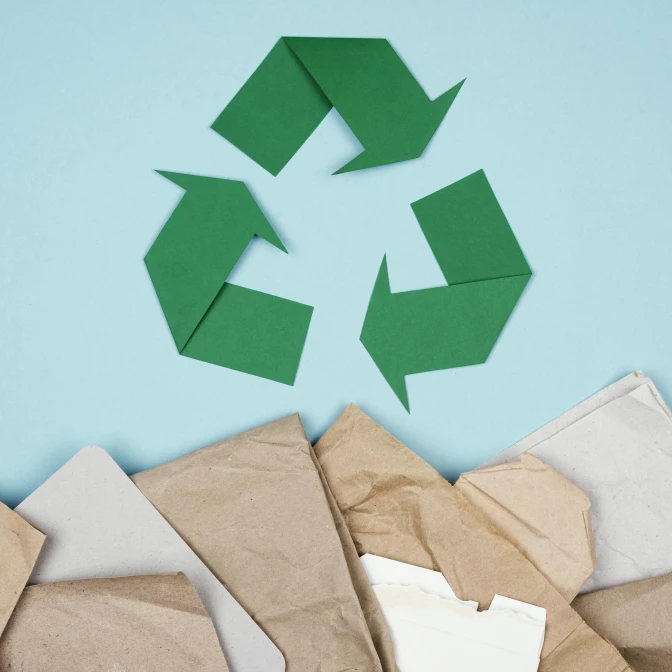
Cardboard recycling - how does it work and why is it important?
Today, recycling is not just a fashionable trend, but an everyday practice that has become a standard for many societies on the road to sustainability. Actions such as segregating waste, reducing plastic consumption or consciously managing resources are gaining popularity, showing a growing ecological awareness. This is an important step towards protecting the planet. But how exactly does the paper recycling process work and what are the benefits? You will find the answers to these questions later in this article.
What is recycling?
Recycling is the process of turning waste into secondary raw materials that can be reused in the production of new products. It aims to protect the environment by reducing waste and limiting the use of natural resources. Recycling includes materials such as plastics, paper, metal, glass or textiles. The process not only saves resources but also reduces greenhouse gas emissions, promoting sustainability and supporting a circular economy.
How does the recycling process work?
- Segregation
The process starts in our homes, where the waste is placed in the appropriate bin, i.e. the blue one for paper or for the paper recykling. - Sorting
Paper waste goes to special paper mills where it is segregated. They are separated into specific types of waste paper and waste that is not suitable for recycling such as damp paper, greasy paper or paper containing various other elements that cannot be separated. - Pulping and refining
Once the sorting is complete, the process of pulping and refining the papers begins. Various types of machinery and tools are used for this purpose, such as crushers, shredding lines or chip machines, which prepare the material for the next stages. - De-inking
In the next step, dyes are removed from the paper, which is particularly important for coloured items such as notebooks or newspapers. - Bleaching
Bleaching aims to improve the aesthetics of the material, making it clean and bright and making it more attractive and reusable. - Dewatering and shaping
The final step is to remove excess water from the pulp, which is then pressed and moulded into finished products. This is how the finished products are created.
The recycling process is a long and complex but extremely efficient operation. After the many stages that cardboard waste overcomes, we are able to obtain valuable raw materials such as new cardboard, boxes or paper ready for reuse in various industries.
Benefits of recycling
- Environmental protection
The recycling process reduces the amount of waste going to landfill and into the environment, reducing damage to soil, water and air. Landfilling of rubbish damages plant and animal habitats. It also affects aquatic animals that regularly come into contact with plastics in the seas. Segregating waste helps protect both terrestrial and aquatic ecosystems that are at risk.
- Reducing energy consumption and CO2 emissions
Manufacturing products from secondary raw materials requires much less energy and generates fewer greenhouse gases. A very good example is aluminium, the recycling of which saves as much as 95% of energy compared to production from primary raw materials.
- Conserving natural resources
Processing secondary materials reduces the need to extract natural raw materials such as oil, metals or wood. This reduces the environmental degradation resulting from mining processes and the associated greenhouse gas emissions.
- Job creation
The growth of the recycling industry supports the economy by creating new jobs in the waste processing sector. The establishment of new recycling facilities increases employment opportunities and promotes sustainable economic development.
Summary
Caring for the future of our planet is a responsibility that falls on each of us. Recycling is a powerful tool in the fight against environmental problems, contributing to a better future. Technological advances in waste processing are providing increasingly effective methods to reduce the carbon footprint. As conscious consumers, we can make a difference by engaging in the segregation and responsible use of raw materials. As an easily recyclable material, paper is an excellent alternative to plastic. Choosing paper is a simple but significant environmental step that each of us can take to contribute to sustainable development.
